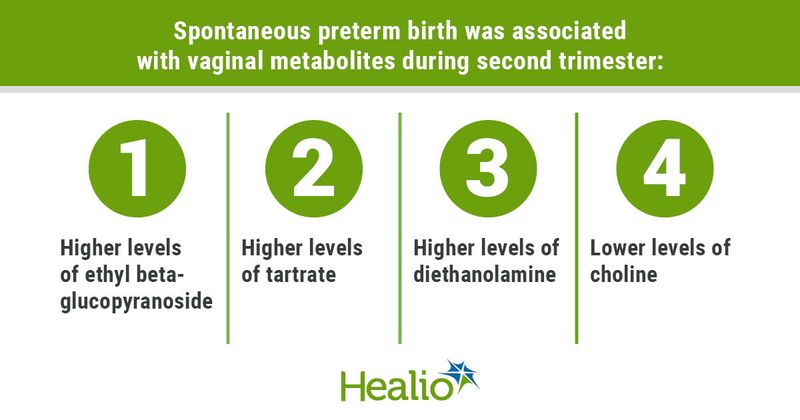Chemicals found in hygiene, cosmetic products associated with preterm birth
Click Here to Manage Email Alerts
During the second trimester of pregnancy, the presence of certain vaginal metabolites often found in cosmetic and personal hygiene products may be early indicators of preterm birth, according to data published in Nature Microbiology.
“It has been repeatedly shown that the vaginal microbiome is connected to preterm birth, but some results have not generalized well between studies, and many of the specifics of this connection are still unknown,” Maayan Levy, PhD, an assistant professor of microbiology at the Perelman School of Medicine at the University of Pennsylvania, and Tal Korem, PhD, an assistant professor in the department of systems biology at Columbia University, told Healio. “We were interested in investigating the vaginal metabolome in addition to the microbiome. Our hope was that metabolites will give us an additional functional view of this system, enabling us to study not just which microbes are there, but potentially also what they are doing.”

Defining the cohort
Levy, Korem and colleagues used vaginal samples saved from the Motherhood and Microbiome cohort, which enrolled 2,000 pregnant women before 20 weeks’ gestation and followed them through delivery to assess spontaneous preterm birth before 37 weeks’ gestation. The researchers identified samples from 80 women who had a preterm delivery and 152 women who had a term delivery, all of whom had microbiome data available.
The researchers developed a machine learning algorithm to predict preterm birth using the vaginal metabolome.
In total, 635 metabolites were identified, as were 110 unnamed spectral features. More than half the samples contained 549 metabolites, and all samples contained 108 metabolites.
Findings
Spontaneous preterm birth was associated with higher levels of ethyl beta-glucopyranoside (P = 1.9 x 10-4), tartrate (P = 4.8 x 10-4) and diethanolamine (P < 10-10).


“These are chemicals that are unlikely to be produced by either humans or their microbes, and are therefore likely to originate in an external source — or sources,” Korem and Levy said. “In this case, based on the literature and what is known on each of these metabolites, our best guess is that these xenobiotics originate in cosmetic or hygienic products. If this turns out to be true, this could lead to new preventive measures that might help us reduce the rates of preterm births.”
Additionally, spontaneous preterm birth was associated with lower levels of choline (P = 5.5 x 10-4), which is an essential nutrient. The researchers suggested that low levels of choline may be associated with high levels of diethanolamine, which is known to disrupt choline metabolism.
“Our study offers several ‘leads’ — for preventive measures, diagnostics and understanding of the interaction between the vaginal microbiome and prematurity — but all of them need further study and validation before they are translated to the clinic or to any sort of recommendations,” Levy and Korem said. “We are currently working on more accurately identifying potential sources for the xenobiotics in question, so that we can start testing if avoiding them reduces the risk for preterm birth.”

